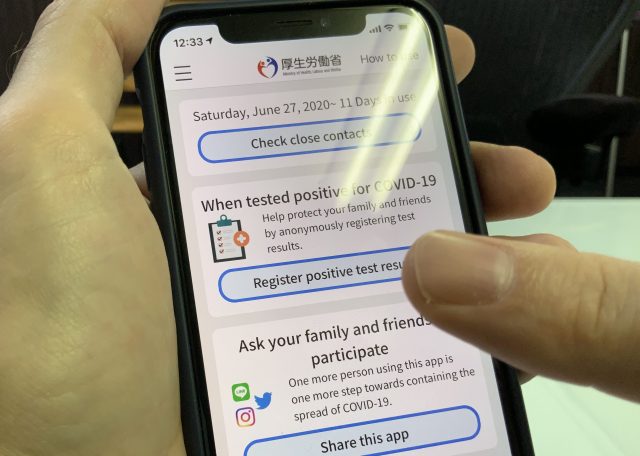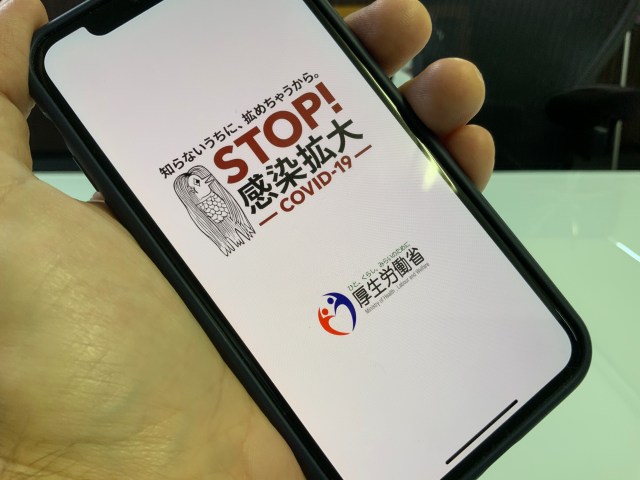
It’s not like we needed it or anything.
Hey everyone, do you remember COCOA?
Of course you don’t. While the most popular answer is probably the beans that make chocolate, in all-caps it’s the COVID-19 Contact Confirming Application, a 41-million-yen (US$390,000) contact tracing app that the Ministry of Health Labor and Welfare released last June.

The way it works is simple: By installing the COCOA app on your smartphone it automatically and anonymously keeps a record of other COCOA users that you come within one meter of for more than 15 minutes. Then, if one of those people tests positive for COVID-19 in the following two weeks, your phone receives a notification that you should get yourself checked out too.
The way it doesn’t work is also simple: For this system to effectively contribute to the reduction of infections, roughly 60 percent of the population would have to have it installed and functioning. This means it would have to be vastly more downloaded than the likes of TikTok, Instagram, and basically any other app in existence, which it made a surprisingly good attempt at.
 Image: PR Times
Image: PR Times
App Annie Japan crowned COCOA as the most downloaded app of 2020, and according to the ministry it has been downloaded 24.64 million times as of 3 February, 2021. While those numbers would make any app developer drool, it still only amounts to 19.5 percent of the population, in the highly unlikely scenario that each download was made by an individual person and it is still installed on their phone.
I too did my civic duty and downloaded COCOA last summer. There it sat, dormant along with my Stocks and Fitness apps in the “Wasteland” folder.

I never heard so much as a bleep from it since, which I assumed meant I was being super safe during these hazardous times. However, as cases exploded over the winter, some people started noticing that their COCOA apps weren’t pinging even though people they knew were coming down with COVID-19. Others who were infected had trouble registering it in their own app.
As more and more reports of this came into the ministry, an investigation revealed that an update they released last September caused COCOA to not work properly on certain Android devices. Apps on iOS were said to be completely unaffected by the problem, and a fix should be ready by mid-February.
▼ An apology press conference was held by health minister Norihisa Tamura and a densely packed group of reporters.
It is not clear which ones or how many, but Android users account for 31 percent of COCOA downloads. This means as many as 7.7 million COCOA apps might have been rendered useless throughout the entire third wave of infections.
I’m at a loss for words, so let’s see what others had to say:
“…Hey!”
“This…I’m speechless.”
“That’s horrible.”
“Um…Isn’t it too late now?”
“What the hell? I installed COCOA on all my company’s phones, and they’re all Android.”
“Why are they so bad at this?”
“So, it’s okay if Android users get infected?”
“Huh…But if this was such a problem, wouldn’t they have noticed it earlier when the traffic of notifications changed dramatically as a result?”
Indeed, it’s not so much the mistake, since bugs in apps are a part of our daily life, but not noticing something like that for over four months is quite amazing. As the last comment suggested, it means that the problem wasn’t so big, the app isn’t so useful, or both.
Considering about 10,000 of the total 377,000 cases that occurred since COCOA was released were recorded in the app, the answer is pretty clear and we all better start blowing up our inflatable face shields.
Now if you’ll excuse me, I’m going to check if my Stocks app is actually working or not.
Source: NHK, Yomiuri Shimbun, PR Times, Hachima Kiko
Images: ©SoraNews24 (Unless otherwise noted)
● Want to hear about SoraNews24’s latest articles as soon as they’re published? Follow us on Facebook and Twitter!

No hay comentarios:
Publicar un comentario